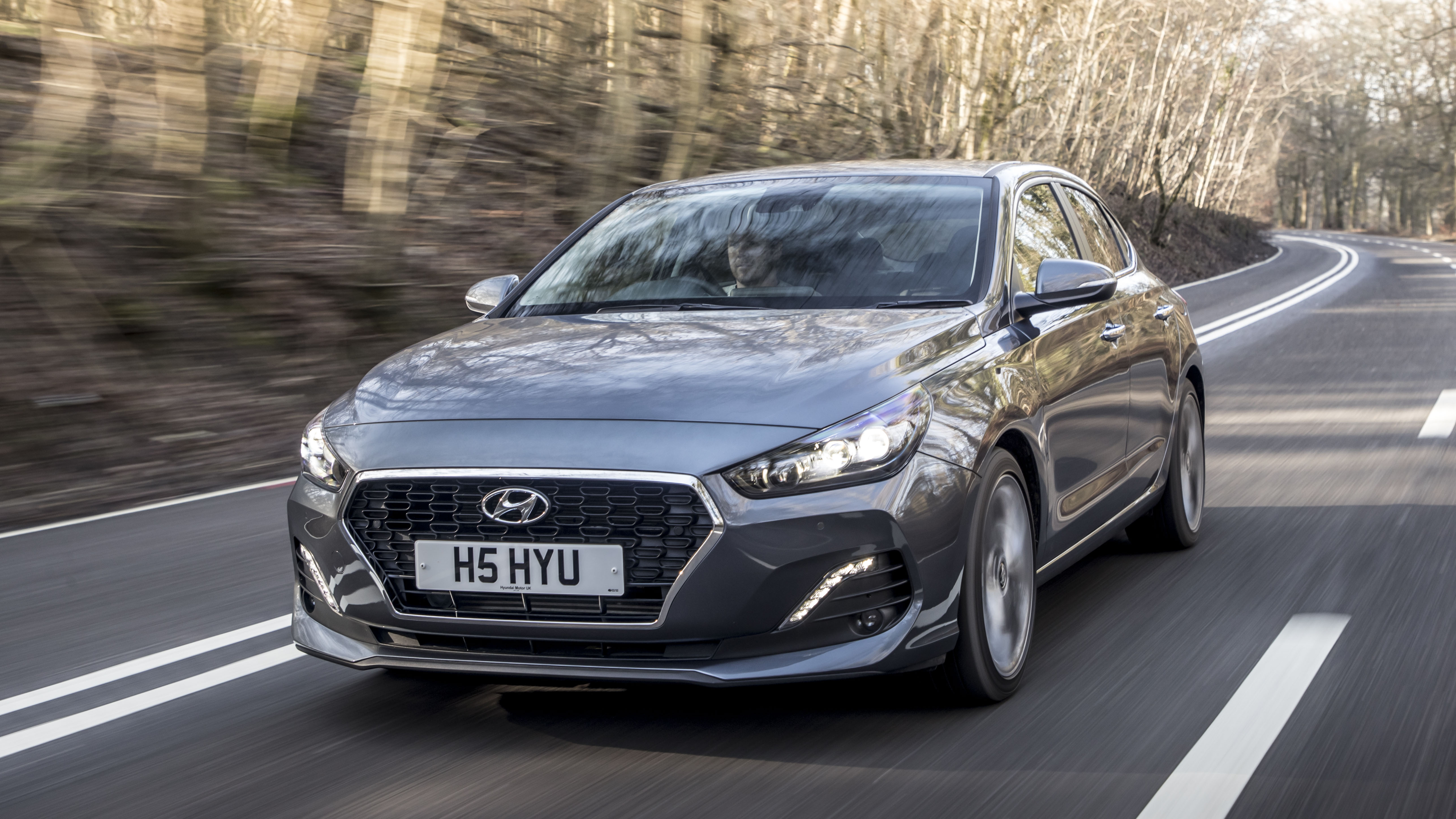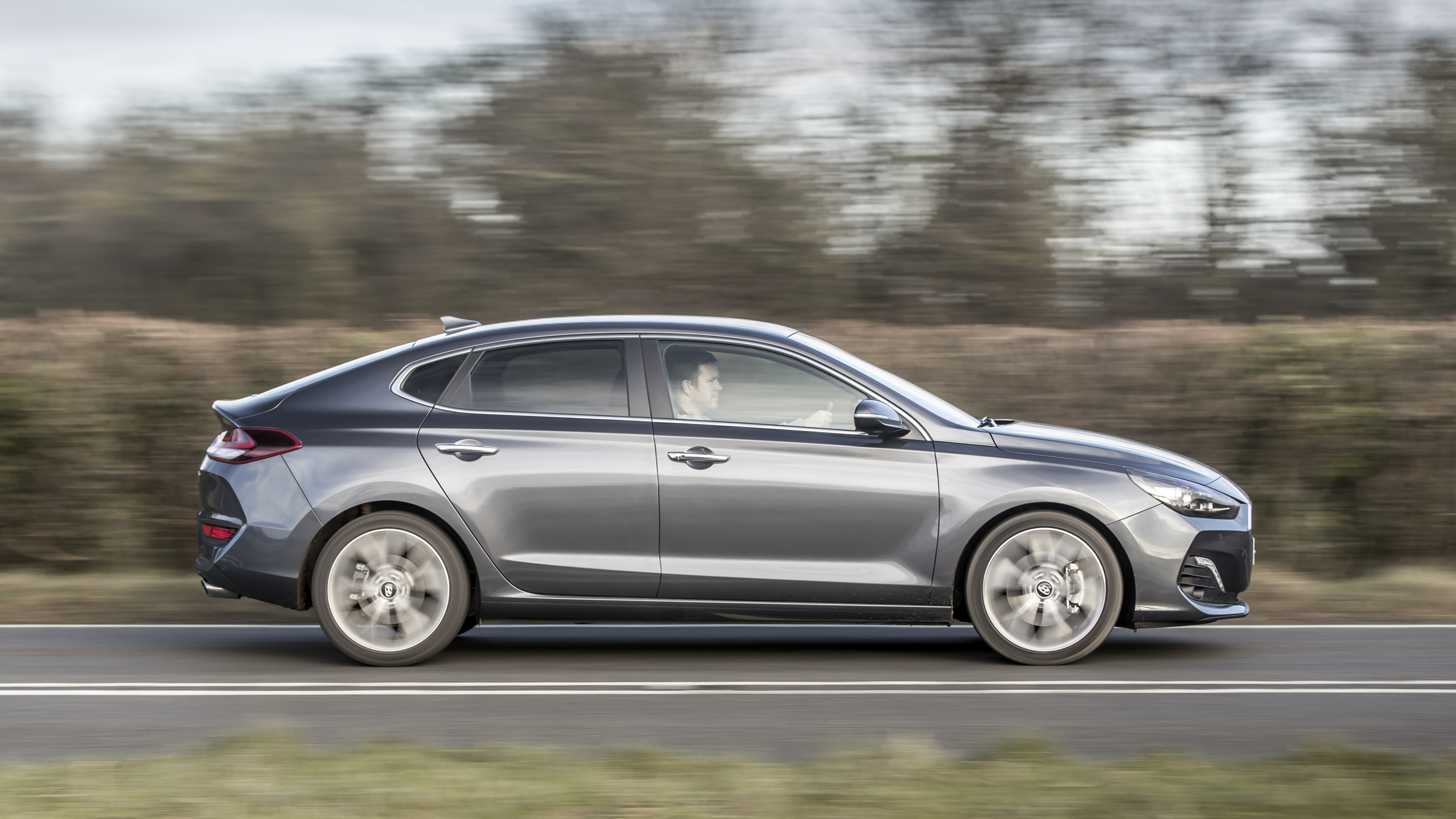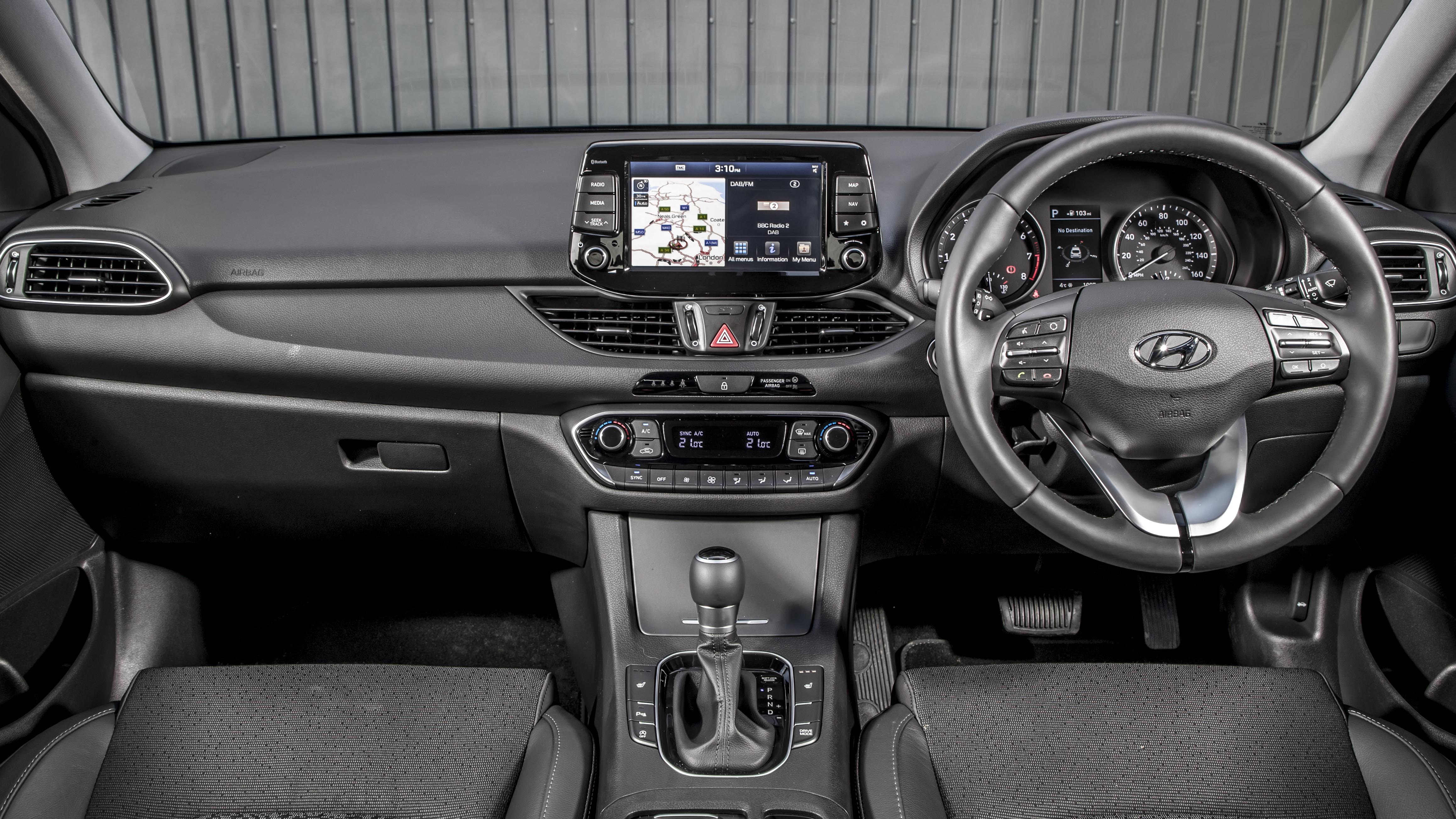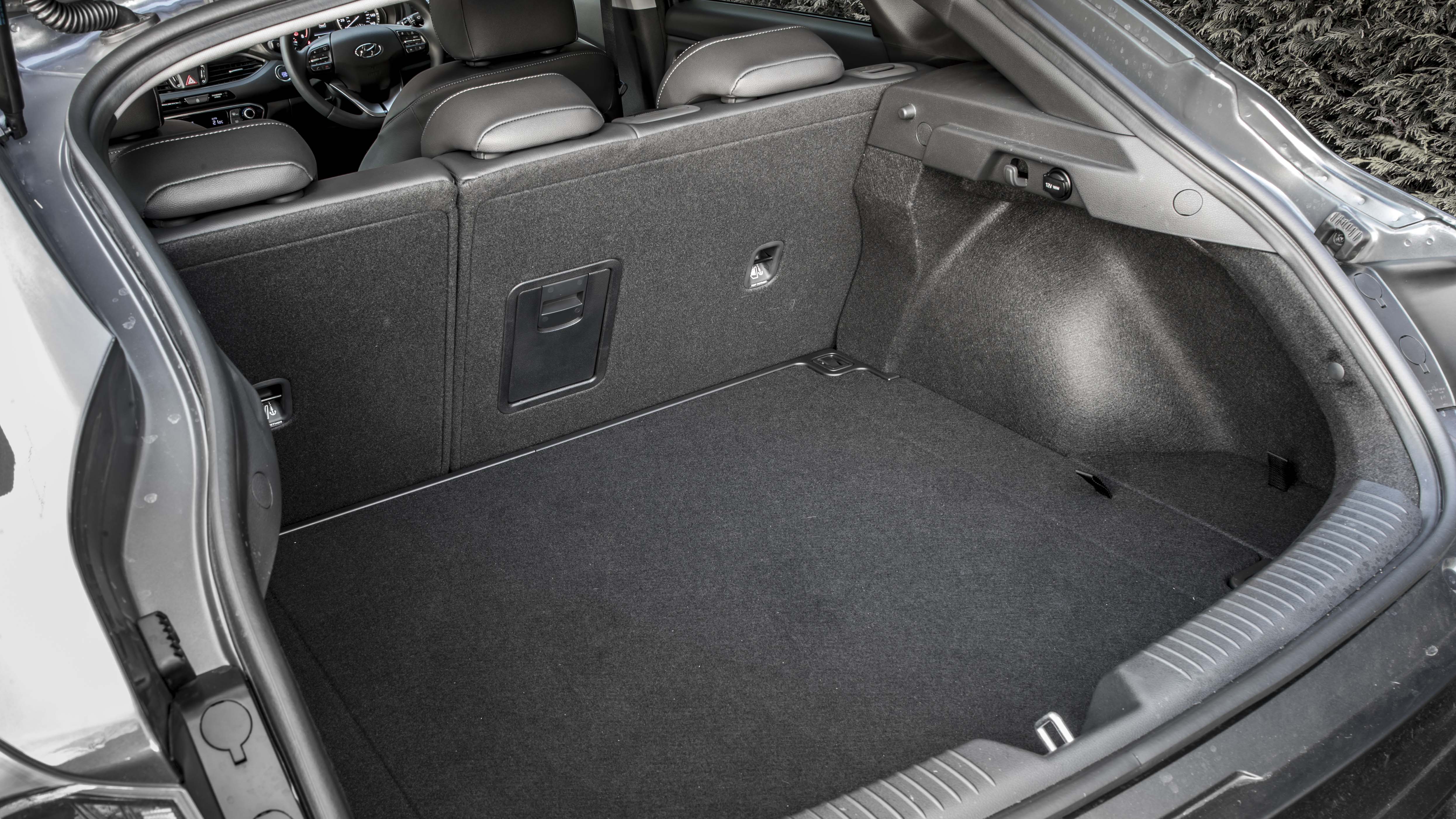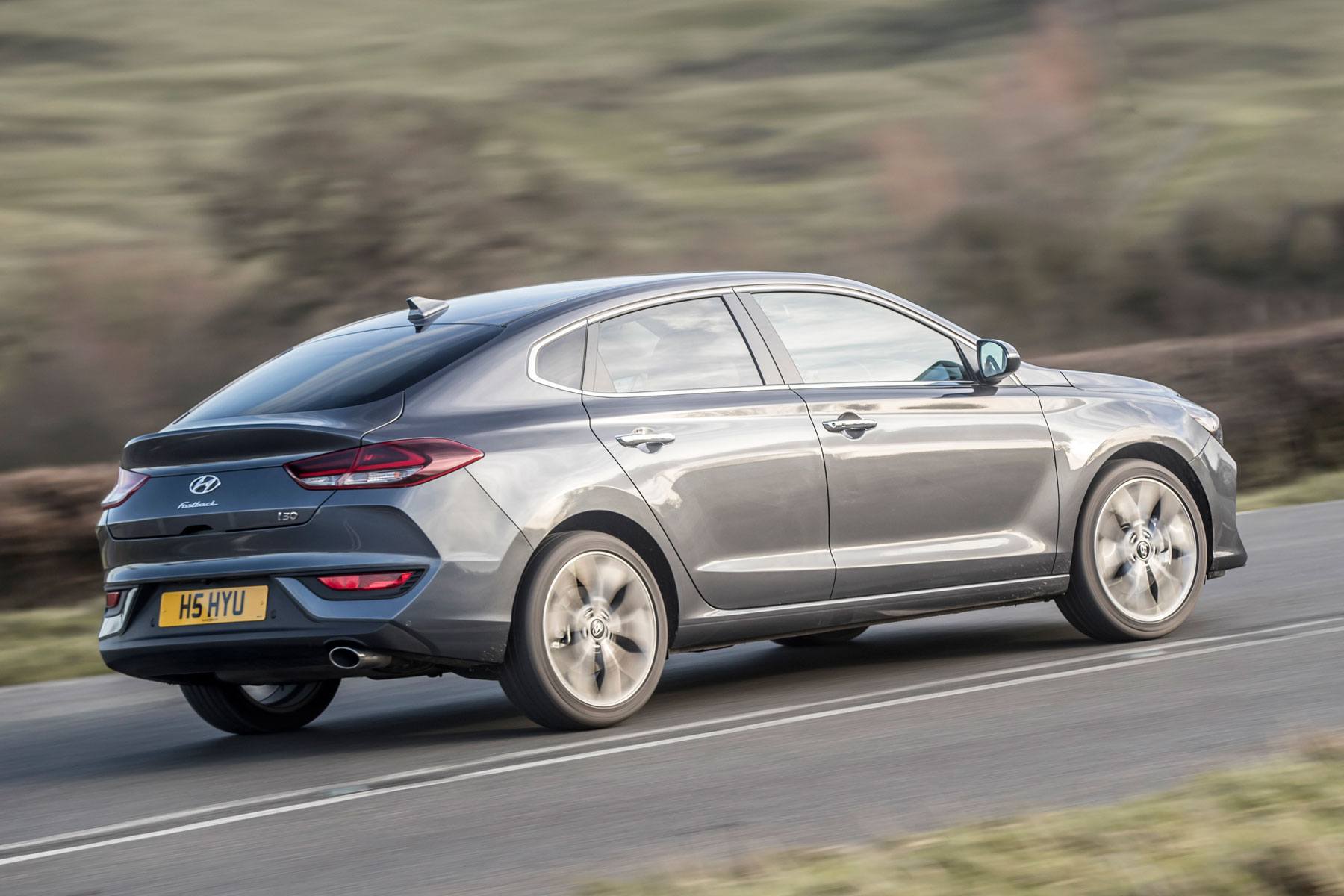Hyundai i30 Fastback Review
Unlike anything else in its class, the Hyundai i30 Fastback is a sporty-looking car that's surprisingly practical
Strengths & weaknesses
- More stylish than a conventional hatchback
- High-tech specification
- Large boot and spacious interior
- No diesel option
- Limited headroom in rear
- Substantially more than an i30 hatchback
The Hyundai i30 Fastback is the fourth member of the i30 family, joining the i30 Hatchback, i30 Tourer estate and i30N hot hatch.
As a small family saloon with a sporty design, it's pretty much the only model of its kind on sale at the moment. Yes, there is the Mercedes-Benz CLA, but as a premium car, base models are around £5,000 more expensive than the cheapest i30 Fastback.
The i30 Fastback takes the solid styling of the hatchback and adds a sloping coupé-like rear. It’s certainly an attractive car, looking even better when you see it up close and in the metal than it does in pictures.
The interior is equally well designed, with solid, if unspectacular, materials that are put together is a way that feels robust and well constructed. The driving position is comfortable, with plenty of adjustment, while there’s also plenty of room in the rear: the sloping roof does make headroom challenging for passengers over six foot, but there’s also enough legroom to allow them to stretch out.
The boot, at 450 litres, is larger than you’ll find in the hatchback but there are some more limitations – the lip is higher and there’s no parcel shelf flexibility – but it’s still very usable space: plenty of room for a weekly shop, for example, or luggage for a trip.
Every i30 Fastback comes with a high level of technology. All models having an 8in dashboard touchscreen as standard, along with satellite navigation and smartphone integration.
There are only two petrol engines available at the moment, with a diesel due to arrive later this year. The larger 1.4-litre engine, especially with the seven-speed automatic gearbox, is heavier than the three-cylinder 1.0. And you can tell when you drive the car on any road that features bends: the smaller engine makes the i30 Fastback feel better balanced and more nimble, so it feels more engaging to drive.
Hyundai’s engineers have also tweaked the suspension compared to the hatchback, with the result that it's smoother: the car deals with irregularities in the road surface with real competence, especially if you stick to the smaller 17-inch wheels.
There are three trim levels, all of which feature lots of equipment as standard, so a starting price of £20,305 when new is reasonable value (the range-topping variant is £25,155). You'll save even more with a nearly-new model: prices start at under £18,000.
However, you'll spend a lot less on a standard Hyundai i30 hatchback in SE Nav trim. Nearly new cars are around £3,000 cheaper than the equivalent Fastback.
It’s not entirely straightforward to make a comparison of the i30 Fastback with other models because, as yet, there’s no direct rival. It’s certainly a niche model, but one that isn’t unconvincing: it looks sporty and stylish, feels engaging to drive (with the right engine), feels practical and has all the latest technology.
It ticks a lot of boxes and, if you’re in the market for a car that looks a little different to everything else on the road – short of spending a lot more money on something such as the Audi A5 – it could be just the ticket.
Key facts
| Warranty | 5 years/unlimited mileage |
|---|---|
| Boot size | 450 litres (rear seats folded down) |
| Width | 1,795mm |
| Length | 4,455mm |
| Height | 1,425mm |
| Tax | £160-£200 in the first year, £140 thereafter |
Best Hyundai i30 Fastback for...
Best for Economy – Hyundai i30 Fastback 1.0 T-GDi
The smaller three-cylinder engine offers better economy (54.3mpg) and emits less CO2 (meaning lower VED payments), so it should prove cheaper to run.
Best for Performance – Hyundai i30 Fastback 1.4 T-GDi
The larger of the two available petrol engines has a lower 0-62mph time (9.2 seconds) and higher top speed than the 1.0. However, don’t be surprised to see something quicker being added to the range in late 2018.
History
- September 2017: i30 Fastback unveiled at Frankfurt Motor Show.
- January 2018: i30 Fastback goes on sale in UK.
Understanding Hyundai i30 Fastback names
Engine 1.4 T-GDi
There are two engine options, both petrol, both turbocharged – a 1.0 unit producing 120HP and a 140HP 1.4 four-cylinder engine.
Trim Premium
There are three trim levels – SE Nav, Premium and Premium SE – that offer different levels of equipment: the greater the cost, the more equipment is fitted as standard.
Gearbox DCT
The 1.0 has a six-speed manual gearbox, while the 1.4 is available with either six-speed manual or seven-speed dual-clutch automatic, or as it's know here, a DCT.
Hyundai i30 Fastback Engines
1.0 T-GDi, 1.4 T-GDi
At the launch of the i30 Fastback, there’s the choice of just two turbocharged petrol engines (a new 1.6-litre diesel will be added to the line-up in late 2018).
The three-cylinder 1.0 T-GDi produces 120HP and offers a set of efficient figures for a petrol engine (on paper, at least), with fuel consumption of 54.3mpg on the combined cycle and CO2 emissions of 120g/km. It has that bassy thrum of a three-cylinder, but it’s actually pretty refined for all that. It certainly feels peppier than the 11.5-second 0-62mph time suggests and while it feels nippy from a standing start, the power delivery flattens out as speed increases. However, the lightness of the engine also benefits the driving dynamics of the car, making it feel better balanced on the road than variants with the other powerplant in the line-up, the 1.4 T-GDi.
The larger engine has an extra 20HP, taking the maximum power rating up to 140HP, which trims the 0-62mph time down to 9.2 seconds (or 9.5 seconds when fitted with a seven-speed DCT dual-clutch gearbox). It doesn’t feel as quick off the mark as the 1.0, but the greater power kicks in as the speed increases and it’s more capable at higher motorway speeds. There is a penalty to pay for that extra power, though, with a 49.6mpg (50.4mpg in the auto) fuel economy figure and CO2 emissions of 134g/km (129g/km).
|
Fuel |
Fuel economy |
Power |
Acceleration (0-62mph) |
Top speed |
|
|
1.0 T-GDi |
Petrol |
54.3mpg |
120hp |
11.5s |
117mph |
|
1.4 T-GDi |
Petrol |
49.6mpg |
140hp |
9.2s |
129mph |
|
1.4 T-GDI DCT |
Petrol |
50.4mpg |
140hp |
9.5s |
126mph |
Hyundai i30 Fastback Trims
SE Nav, Premium, Premium SE
The i30 Fastback is available in three trim levels, keeping buyers’ options relatively simple.
Equipment on the base SE Nav version includes 17-inch alloy wheels, front fog lamps, halogen headlamps with smart high beam function, rear parking assist system, rear view camera, cloth-covered seats (with both driver’s and passenger’s seats height adjustable, with additional electric lumbar adjustment to the driver’s side), leather-covered steering wheel, 8-inch LCD touchscreen, satellite navigation, Bluetooth with voice recognition, Apple CarPlay and Android Auto smartphone integration, plus wireless phone charging on compatible handsets.
Stepping up to Premium trim adds dual- zone climate control, electronic parking brake with auto hold function, privacy glass and heated front seats with artificial leather/cloth seat facings, an electrically adjustable driver’s seat, front and rear parking assist system, LED front headlights and rear combination lights. Premium cars fitted with the 1.4 T-GDi engine also have 18-inch alloys.
The range-topping Premium SE then adds a full-length sunroof, leather seat facings and a heated steering wheel.
Hyundai i30 Fastback Reliability and warranty
The i30 Fastback is too new to have appeared in the most recent Driver Power survey and the i30 hatchback also doesn’t appear. However, the Hyundai Tucson fares well in the table of most reliable cars, while other models (i10 and i20) appear in the list of top 75 cars. The Hyundai brand is also 10th in the list of most reliable manufacturers.
Hyundai has one of the best warranties in the business, covering five years and unlimited miles, so buyers should have peace of mind.
Used Hyundai i30 Fastback
Generally, second-hand Hyundais retain their value well, thanks in part to the five-year warranty (part of its triple-care package, which also includes free annual vehicle health checks and roadside assistance for five years).
However, used models are just hitting the market with some strong savings. New top of the range models (Fastback Premium SE) start at £24,745. However, 2017 cars with less than 5,000 miles are popping up at as little as £18,000, while SE Nav versions are even less.
Other Editions

i30 (2013 – 2017)
Practical, reliable and stylish, at the right price the Hyundai i30 is also a top-value family hatchback
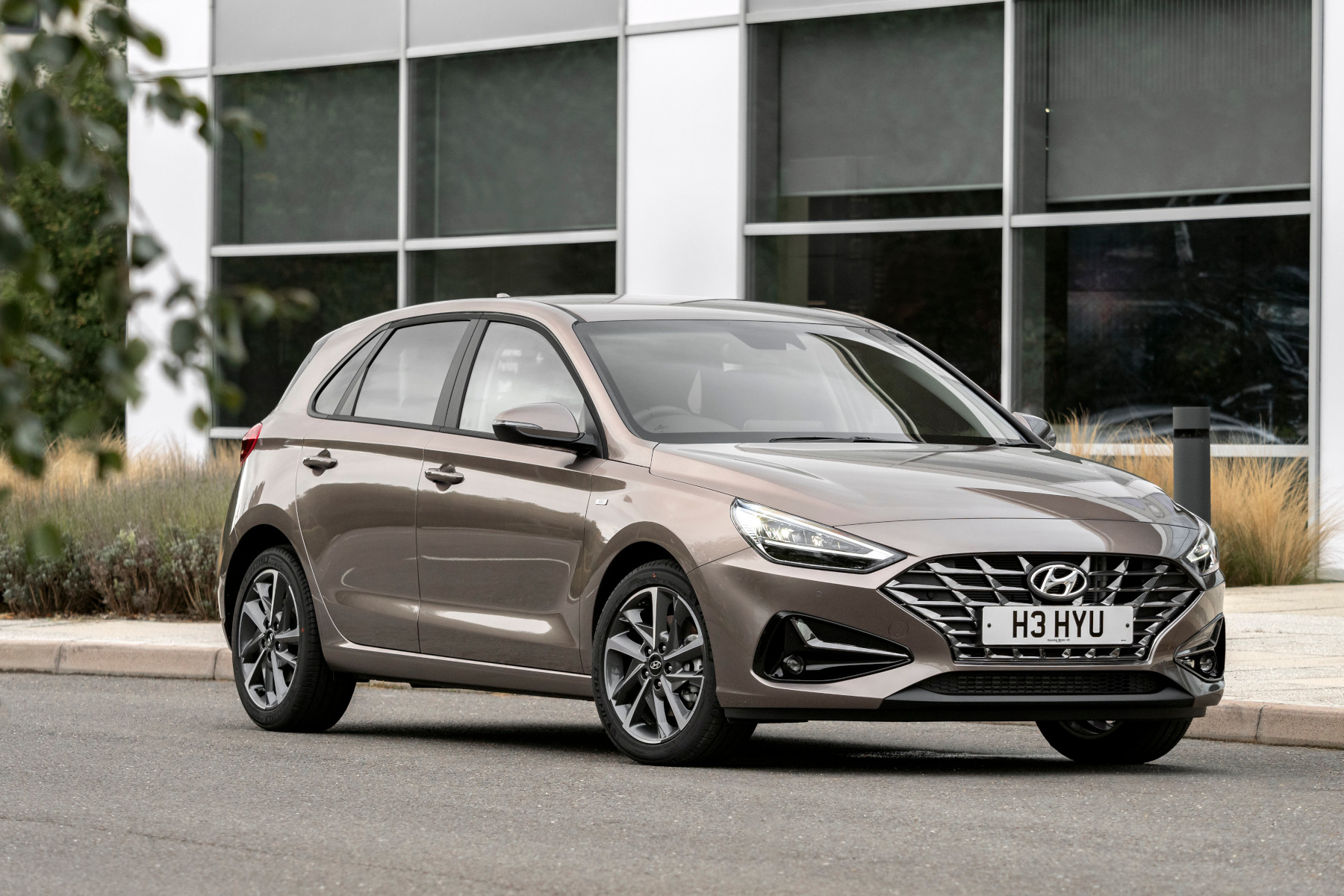
i30 (2017)
It still has a five-year warranty but the Hyundai i30 is no longer a budget family hatchback

i30 N (2018)
The Hyundai i30 N is great to drive, well equipped and good value for money

